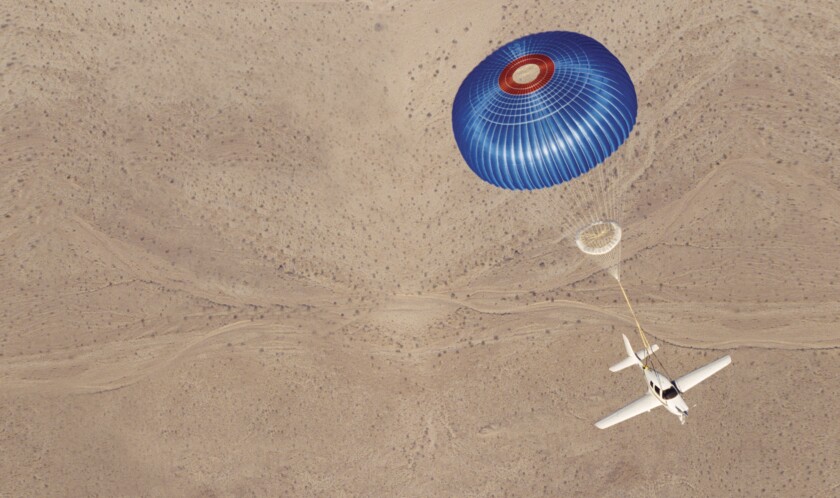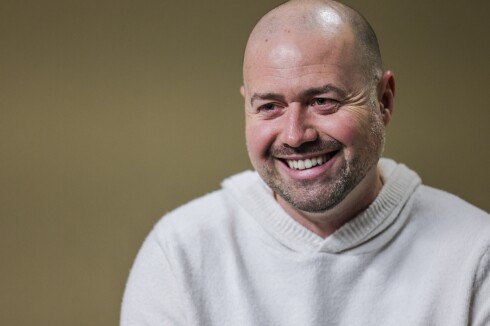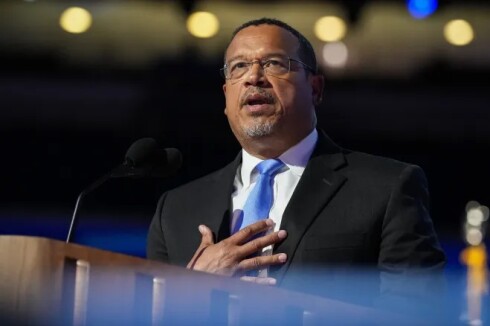DULUTH — Laurie Anderson said she will remember her late husband as “forever 33.”
That was pilot Scott D. Anderson’s age when he died, following the crash landing of Cirrus Aircraft’s first production airplane during a test flight on March 23, 1999.
ADVERTISEMENT
While the tragic incident occurred 25 years ago, Laurie Anderson said it almost feels like yesterday. That’s how easily she can transport her thoughts to the date of his loss, at a time when she was just three months pregnant with their only child — later named Scott “Evan” Anderson in honor of a father he would never meet.
Gary Black, who worked alongside Anderson as a test pilot, had flown the same plane that morning before heading to Chicago to pick up Cirrus co-founder Alan Klapmeier in a twin-engine aircraft. Only after arriving in the Windy City did he learn that 115-Charlie Delta had crashed, and Scott was in the hospital.
“We flew back, but of course we lost Scott that evening,” he said.
Fatal test flight
Black recalled that Anderson and some members of Cirrus’ engineering team had decided to remove some components to allow more range of motion in testing. “And that’s the flight that we lost Scott on.”
He explained that Anderson, whose call sign was “Ando,” had concerns about the aircraft and thoughts about how the controls might be refined.
“He felt that there was some possible floating in the ailerons. So, they removed the aileron stops, and the rudder/aileron interconnect,” Black said.
Black had been asked to perform accelerated stalls that morning but decided against it, given gusty conditions that could have made such maneuvers potentially hazardous.
ADVERTISEMENT
As for Anderson’s flight, Black said he did not know if his colleague had been trying to execute the same type of requested testing he postponed earlier.
Black explained that the wing of the airplane was made of composite materials, which were stiffer than the aluminum flight controls.
An investigation by the National Transportation Safety Board found that the ailerons, which are flaps on the trailing edge of the wing used to bank the plane in flight, had jammed.
Black said this put Anderson in serious trouble and left him trying as best he could to muscle the plane straight, using his legs under the rudder pedal and his body weight to maintain control.
“He could no longer move the ailerons. So, it was deflected in a full rolling movement, and he was able to stretch the cables with super-human force to maintain some flight control but not enough that he was able to safely land,” Black said.
Anderson’s plane crash-landed on unoccupied prison property just south of Duluth International Airport. While he survived the initial impact, Anderson died a short while later in the hospital.
Cirrus was just 10 days away from having its parachute system incorporated into the aircraft, and Black said that safety feature, had it been available, likely would have led to Anderson’s survival.
ADVERTISEMENT
Today, all Cirrus aircraft come standard-equipped with the parachute system.
Additional control refinements also were made in the wake of Anderson’s fatal crash.
Development of parachute system
Anderson was the first pilot to test Cirrus’ ballistic parachute which can be deployed to safely lower an entire aircraft to the ground under the canopy in case of a mid-air emergency.
With crumple features incorporated into the plane’s design, its occupants are likely to survive a parachute descent, but the aircraft may never again be airworthy.
Black recalls the 18 months he and Anderson spent testing the Cirrus Airplane Parachute System — called CAPS for short — and convincing regulators at the Federal Aviation Administration that it should be certified for mass production.
With just one test plane in Cirrus’ arsenal, Anderson and Black could ill afford to lose it in testing the parachute. Instead, they had to deploy the chute, allowing it to fully expand before cutting it loose in mid-air to resume flight, so they could have another go.

In all, they conducted eight successful in-flight tests of CAPS over the desert of Southern California, flying out of Thermal Airport, now the Jacqueline Cochran Airport, west of the Salton Sea.
ADVERTISEMENT
Black said the FAA hadn’t previously certified such a system, and Cirrus staff had to write up a testing protocol to satisfy regulators’ safety standards. Then they needed to perform those tests in the field, under federal observation.
Looking back, Black said: “We didn’t fully realize how hard it would be.”
‘Calm under pressure’
Laurie Anderson said she accompanied the Cirrus team to the Mojave Desert, where she described her role as that of “a ground rat,” helping to recover parachutes, among other tasks.
“He would climb and then cut the engine and try to put it into a spin and then recover. It was very scary,” she recalled.
But Anderson had great faith in her husband’s abilities as an aviator.
“Honestly, I never thought he would die in a plane crash, and he didn’t either,” she said. “He was really one with the airplane. It was so instinctive for him. He was very calm and measured.”
In a video interview, Paul Johnston, a chief engineer for Cirrus at the time of the testing, said: “If you want to know somebody who was calm under pressure, there is nobody that topped Scott Anderson.”
ADVERTISEMENT
Laurie was already serving with the 148th Air National Guard when Scott joined the unit, and that was where they first met.
Anderson had just graduated from Stanford University with degrees in mechanical engineering and history. He enlisted in hopes of becoming a fighter pilot and quickly achieved that dream, rising to the rank of major before his death.
“If you could sum it up, he just lived life fully and largely. I don’t think I’ve ever met anybody else quite like that,” Laurie said.
Laurie Anderson said her husband took pride in excelling at what he did, but also wanted others to achieve the same sort of success. “He was really inspiring.”
Mentor and friend
Col. Curt Grayson referred to Anderson as “a mentor of mine who helped me get to where I am today.”
Grayson said he was fresh out of high school and working as a maintenance crew chief at the 148th in the mid-1990s when he first met Anderson, a rising F-16 pilot.
In 1996, while still active in the Guard, Anderson was hired at Cirrus, where he served as director of flight operations and chief test pilot.
ADVERTISEMENT
After Grayson graduated from college, Anderson helped him land a job at Cirrus, too, where they got to know each other more closely. Anderson encouraged Grayson to successfully pursue a slot as a fighter pilot with the 148th in 1998.
While Grayson was away in training in Texas, he learned of his friend and mentor’s death. Unfortunately, they never had the opportunity to fly together in a military capacity.
Laurie Anderson said her husband was excited and sincerely motivated to help bring an innovative new aircraft to market.
“He was an idea person, and he loved the idea of realizing a possibility,” she said.
Black estimated that around 200 people were employed at Cirrus at the time of Anderson’s death and said news of his death hit staff with brutal force.
“Every single person knew Scott personally, and it was a huge, huge blow to Cirrus,” Black said. “We wondered: Would the company even keep moving on? But Scott would have wanted it to. And that’s part of why we’re so dedicated to carrying on his legacy.”
Today, Cirrus is the largest manufacturer in Duluth and the No. 1 producer of single-engine general aviation airplanes in the world.
Lasting legacy
Black noted that Anderson’s efforts have helped save many lives since his death.
The parachute system has now been used 129 times, and is responsible for returning more than 200 people safely to their families, to date.
“That was ... an engineering marvel at the time, with ballistics and parachutes on an airplane of that size,” Grayson recalled. “It was the persistence of Scott and the Cirrus engineers that made it happen.”
Anderson’s contributions were recognized with his 2010 induction into the Minnesota Aviation Hall of Fame .
To further honor and remember Anderson, friends and family created a youth program called the Scott Anderson Leadership Forum, inviting about 120 students each summer to participate in five days of activities intended to cultivate a future generation of leaders.
The forum has been operating for more than 20 years, with the College of St. Scholastica hosting it for the past seven seasons.
Scott Olesewski, the college’s outdoor pursuit coordinator, helps orchestrate the event and said, “We want to push these kids out of their comfort zone,” explaining that’s when growth tends to occur.
Olesewski said Anderson’s parents and former colleagues, including Black, participate in the event.
“We really talk about Scott and how he lived his life,” he said, pointing to the pilot’s willingness to step into new challenges and become a better person who can serve others, even when it might require self-sacrifices.
The tale of Anderson’s life story involves many facets, including being a standout athlete and captain of the Duluth East football team; a canoe trip from Duluth to Hudson Bay at the age of 22; authoring books on that outdoor adventure as well as a work of fiction based on his training as a fighter pilot; playing saxophone with local jazz groups; and inspiring others.
Grayson points to his former friend as an excellent role model.
“Ando was very competitive, but he also was competitive in trying to make things better for everyone he met,” he said. “That was one of the things that was so great about him.”
The leadership course also addresses the need to strike a balance.
Laurie Anderson said sometimes people assume her husband must have been a big risk-taker to work as a test pilot.
“But really the exact opposite is true. He was very calculating. All of his decisions were really measured and well thought through,” she said.
In the account of his journey to Hudson Bay, a book called “Distant Fires,” Scott Anderson wrote: “Life is the pursuit, not the destination.”
And Laurie Anderson said that’s the way her husband approached all manner of challenges.
“He wasn’t crabby about trying to get something done. He was like, ‘This is cool. This is fun,’ whatever it was,” she said. “And he was fun to be around.”
Paul Anderson, Scott’s father, said the outpouring of support after Ando’s death opened his eyes to the true impact his son had in the community.
“Since the accident, we’ve just learned so much about Scott and the influence he had on this community,” he said. “Of course, it remains a really hurtful chapter of our life. But we still appreciate hearing from people who comment today about knowing Scott and the positive things that he did.”
Laurie Anderson, who has since remarried, agreed the loss still stings, despite her feelings of gratitude for her former husband.
Their son may be the greatest gift left behind that she continues to hold close.
“Whatever happened, I have Evan who looks like him, sounds like him and walks like him. He’ll even say things sometimes that surprise me, because it sounds like his dad and makes you think about that nature/nurture conversation. It makes me believe that nature really is pretty powerful. I love being surprised by that sometimes.”









